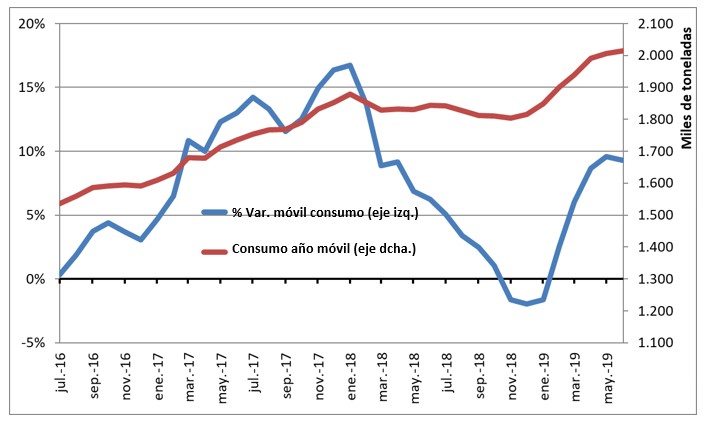Cement consumption in Catalonia during the period July 2018 to June 2019 has exceeded 2 million tons – for the first time since 2012 – and grows at an annual rate of 9%. The improvement of the internal market, in any case, isn’t enough for the consolidation of companies, which have a production capacity of more than 7 million tons per year and, in parallel, have seen how last year exports have been reduced by 16% to add only 2.2 million tons.
The recovery of the Catalan cement industry is absolutely conditioned by the lack of investment in infrastructure. Although there is an increase in the bidding by public administrations during the first half of 2019, the fact that it was based on very low volumes and that some of the planned works do not end up causing a level of cement consumption per capita a third lower in Catalonia compared to the EU average.
The situation of the sector is also affected by the loss of competitiveness in foreign markets, as a result of the energy costs that companies have to bear. The president of Ciment Català, Salvador Fernández Capo, recalls that “our industry pays the second most expensive price in Europe for electricity”. On the contrary, the use of alternative fuels in Catalonia “barely exceeds 30%, when environmentally relevant countries such as Germany, Holland, Sweden or Austria more than double this rate of fossil fuel substitution”.
The need to expand both the catalog of waste that can be reused energy and the volume that is made available to factories emerges as an implementation solution necessary for the maintenance of the Catalan cement industry. In addition, these Circular Economy policies generate important contributions to environmental sustainability, such as avoiding the dumping of waste, reducing the importation and consumption of non-renewable and highly polluting fuels, promoting proximity energy consumption, and reducing CO2 emissions to the atmosphere and, consequently, contribute to the fight against Climate Change.

